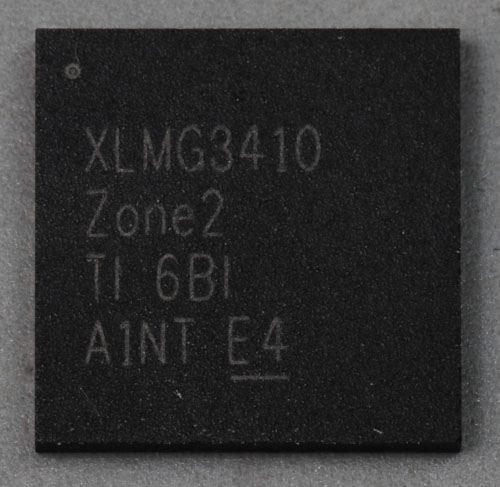
The LMG3410 from Texas Instruments is a transistor based on gallium nitride (GaN). Like silicon carbide, the semiconductor material gallium nitride has a large bandgap and is therefore very well suited to switching high voltages and high currents quickly and with low losses. Compared to SiC, the maximum permissible reverse voltage of GaN transistors is usually somewhat lower, but GaN transistors can be switched faster. In addition to a GaN power transistor, the LM3410 contains a driver and a silicon MOSFET, so that control is relatively straightforward.
Up to 480V can be applied to the LMG3410 continuously. The absolute maximum ratings specify 600V and even 800V transiently. The 800V pulses may only occur one million times. Edge steepnesses of up to 150V/ns are permissible. At a junction temperature of 125°C, 12A is specified as the maximum current flow. At 25°C, the Absolute Maximum Ratings specify up to 40A. Pulses applied for less than 100ns may rise to 100A. The resistance in the active state is given as 70mΩ/110mΩ (25°C/125°C).
The output capacitance of the GaN transistor is 71pF. However, the absence of a body diode is particularly interesting, which is why the reverse recovery charge can be specified as 0nC. This means that in the application in a half- or H-bridge, the reverse charge is much less critical. Although a GaN FET does not have an intrinsic diode like a silicon MOSFET, operation in the third quadrant, i.e. current flow from source to drain, is still possible.
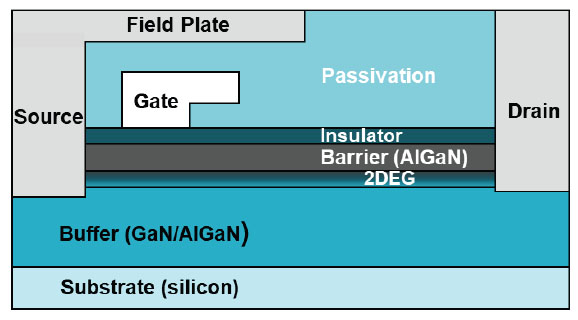
The above image is from an application report by Texas Instruments ("Does GaN Have a Body Diode? - Understanding the Third Quadrant Operation of GaN"). It shows how a GaN transistor can be constructed. A GaN transistor is a so-called HEMT, a High Electron Mobility Transistor. In it, one area contains a so-called two-dimensional electron gas ("2DEG"), in which electrons can flow with very little resistance.
On Wikipedia you can read that it is a special form of the MESFET, i.e. a J-FET in which the channel is not constricted by an inverse doping but by a metal contact. In the meantime, however, there are also variants with an insulated gate electrode. The sectional view shown here appears to contain such an insulating layer. The extension of the source and gate lead controls the electric field in the active area, resulting in a higher dielectric strength.
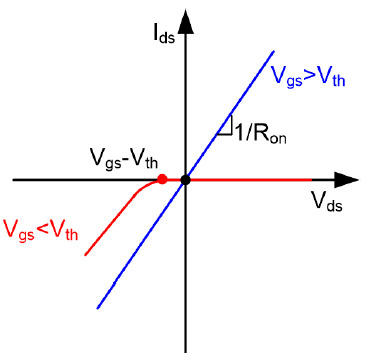
Texas Instruments also explains in the above document why GaN transistors behave as if they contain a body diode. If Vgs is above Vth, current can flow through the device in both directions (blue). If Vgs is below Vth (red), the transistor blocks positive Drain-Source voltages. If Vds is negative, however, the transistor becomes conductive again. The negative drain potential leads to a positive Gate-Drain voltage, which has the same effect in the third quadrant as a positive Vgs in the first quadrant. However, the characteristic curve is shifted by Vgs-Vth and the channel resistance is slightly higher.
Compared to a MOSFET with a body diode, the voltage drop across a GaN transistor in the third quadrant is relatively high. The LMG3410 datasheet specifies 7,8V at a current flow of 10A. This results in correspondingly high losses. Either the current-time area should be kept small in this quadrant or the transistor should be switched on.
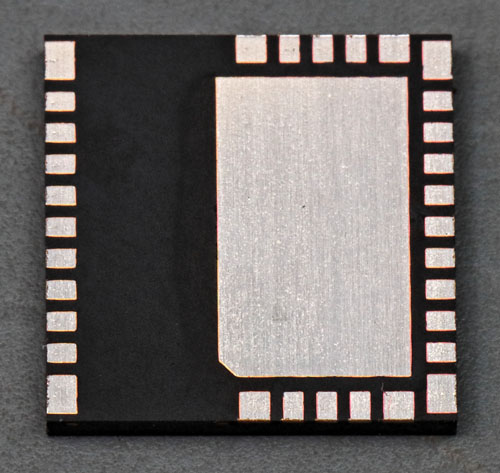
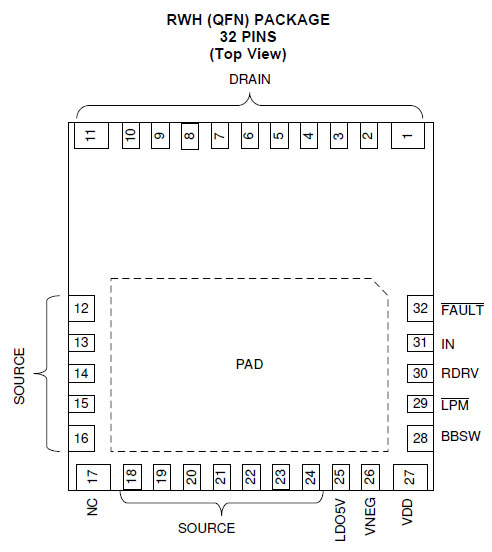
The transistor is in a VQFN package with an exposed pad. The datasheet shows the pinning of the LMG3410. The upper contacts all carry the drain potential. The lower area has a similar number of contacts for the source potential. In addition, there are pins for the supply and the control of the transistor.
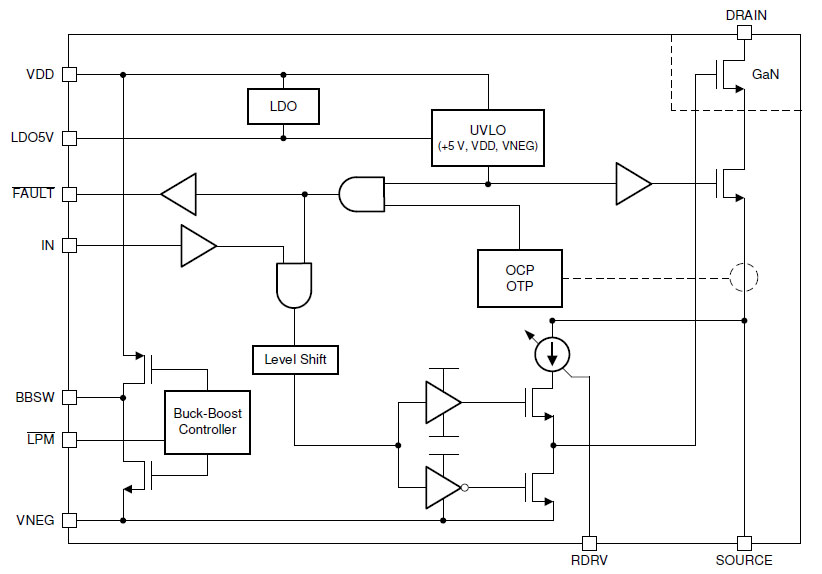
The datasheet contains a block diagram showing how the LMG3410 works. As with SiC transistors, the first GaN FETs were exclusively normally on. Here, such a normally on GaN FET is used. If you still want intrinsically safe behaviour, you can build a cascode, as in the case of the UnitedSiC UF3C120040K4S (
https://www.richis-lab.de/FET05.htm). In the case of the LMG3410, a more complex approach has been taken. There is a normal Si MOSFET in series with the GaN transistor. Here, however, the two transistors do not form a cascode circuit, but are controlled independently of each other.
The LMG3410 requires a supply voltage between 9,5V and 18V. From this, a linear regulator generates a 5V supply for the controller. A switching regulator also generates a negative supply of -13,9V to safely switch off the GaN transistor. The current consumption is typically 43mA.
A push-pull stage either connects the gate of the GaN transistor to the source potential, thus making it conductive, or it connects the gate to the negative supply, thus switching it off. A resistor on pin RDRV allows the switching speed to be varied between 30V/ns and 100V/ns. The LMG3410 contains both an overcurrent and an overtemperature monitor that protects the device against overload.
If the LMG3410 is in the idle state (current consumption 80µA) or is not supplied, the Si MOSFET is switched off and the gate of the GaN transistor is connected to the source terminal of the device. In this state, the voltage across the Si MOSFET rises until the gate of the GaN transistor becomes so negative that it also blocks and thus carries most of the blocking voltage. In the meantime, it is possible to produce normally off GaN FETs too, which simplifies safe application.
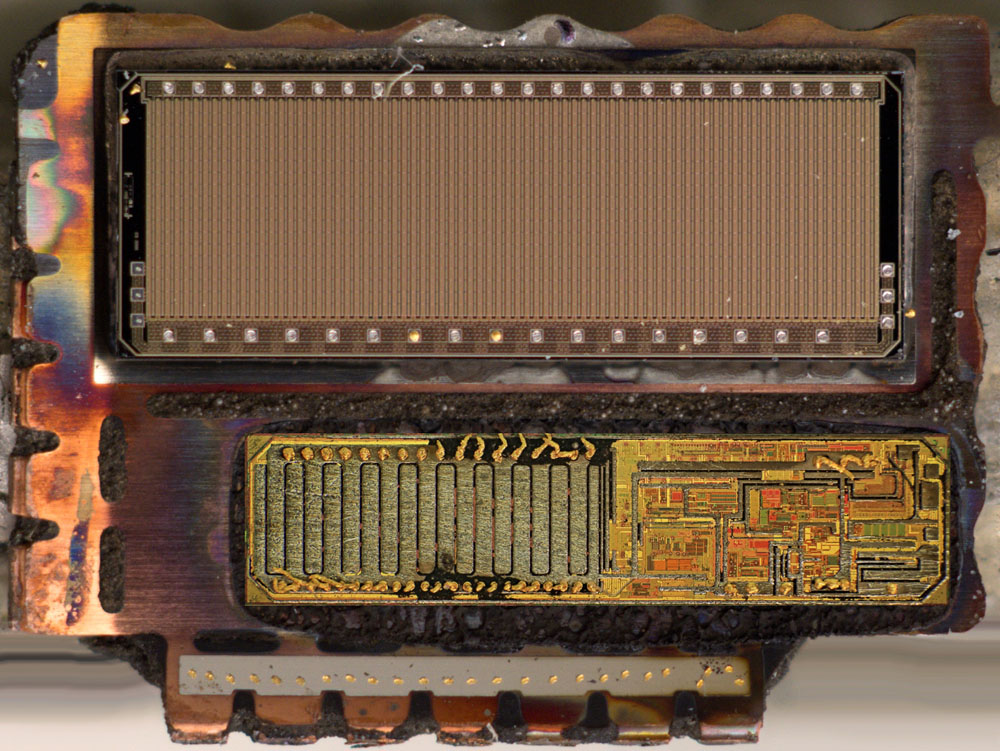
There are two dies in the package. The upper die is the GaN transistor (5,8mm x 2,1mm). The lower die is the control circuit, which also contains the Si MOSFET (5,2mm x 1,3mm). The control circuit detached from the carrier when the package was opened. It was later reinserted into the picture.
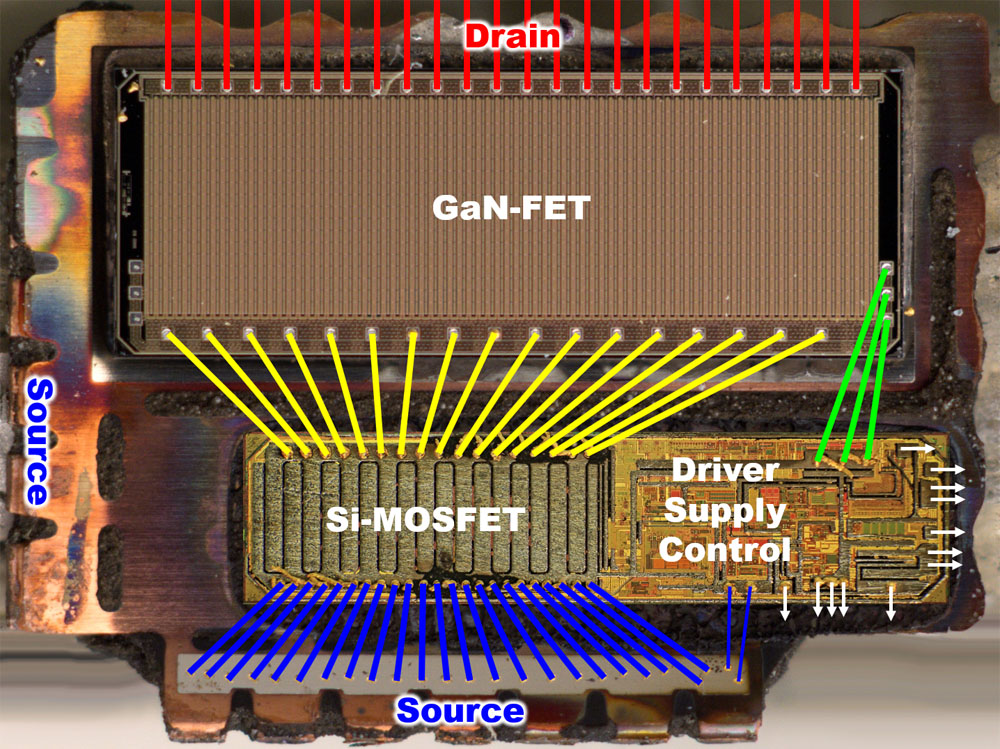
The bondwires can be reconstructed quite easily. GaN transistors usually conduct the current laterally. Here, the Si MOSFET is also constructed laterally. This is possible quite efficiently because the Si MOSFET must be able to carry the full current of the LMG3410 (40A), but no high blocking voltage rating is necessary. Probably a little more than 20V should be sufficient.


Half of the area of the control circuit is taken up by the Si MOSFET. The other half contains the supply circuits, the control and the drivers.
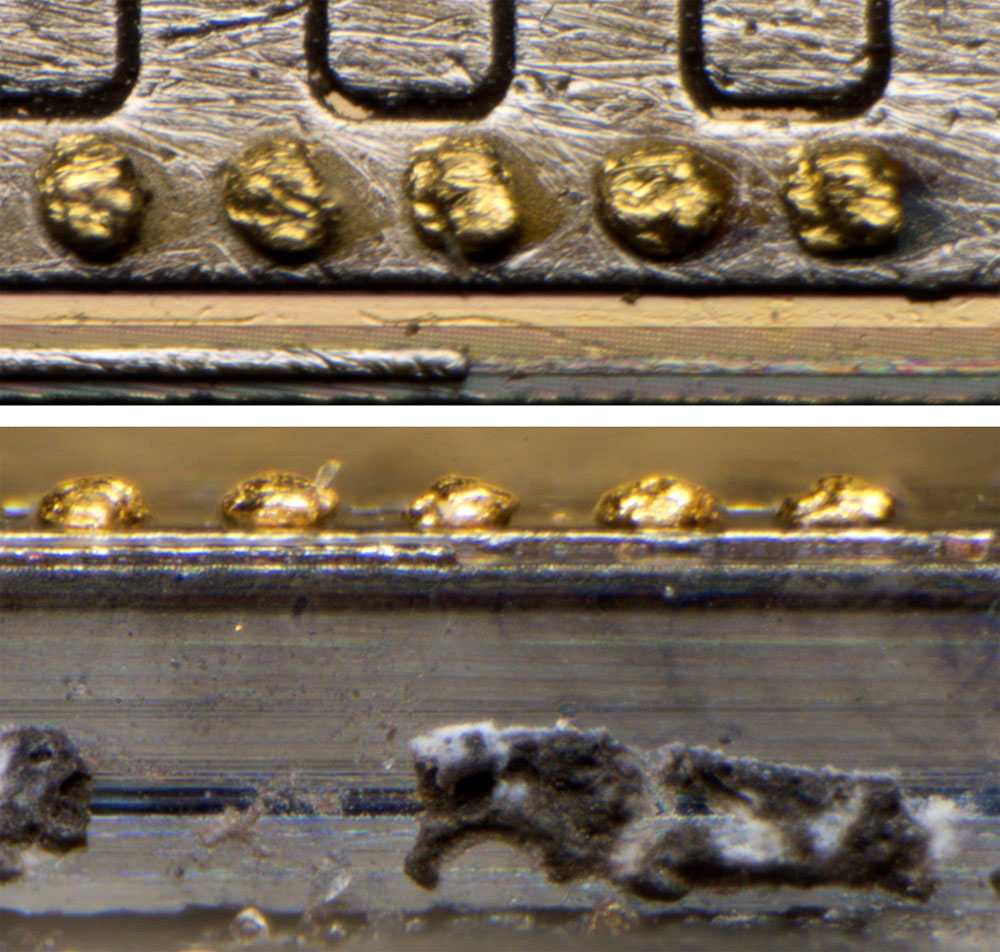
The die is 0,25mm thick and carries a very solid metal layer with a height of about 11µm.
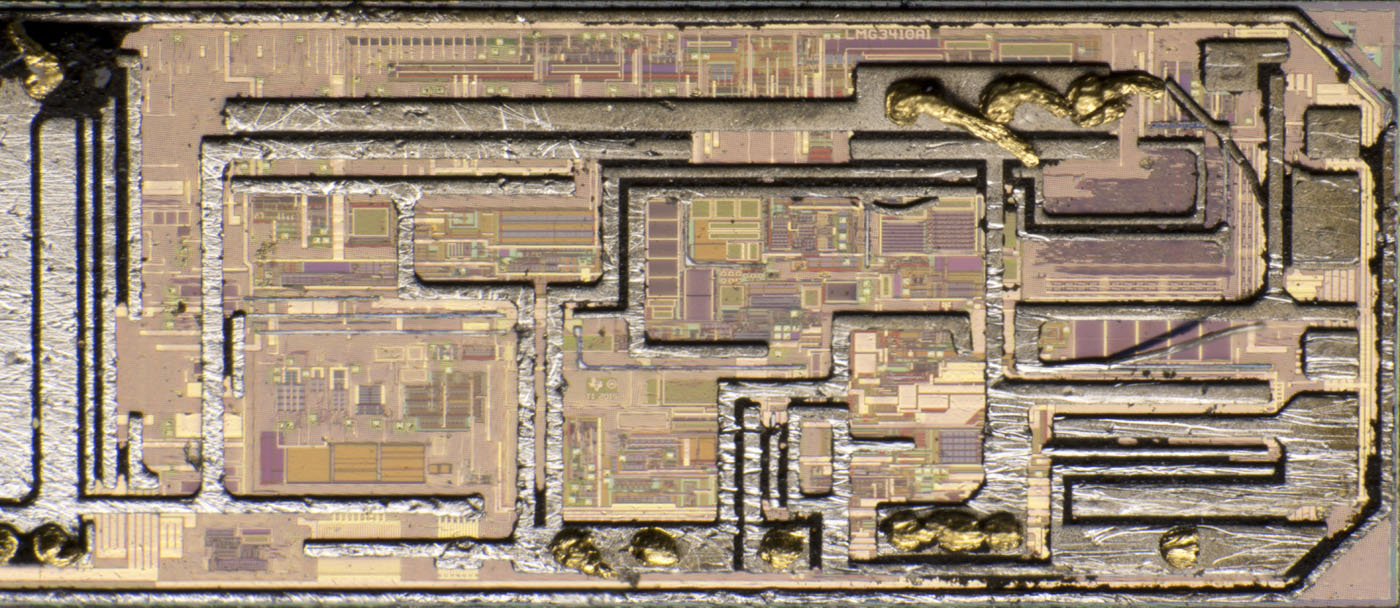
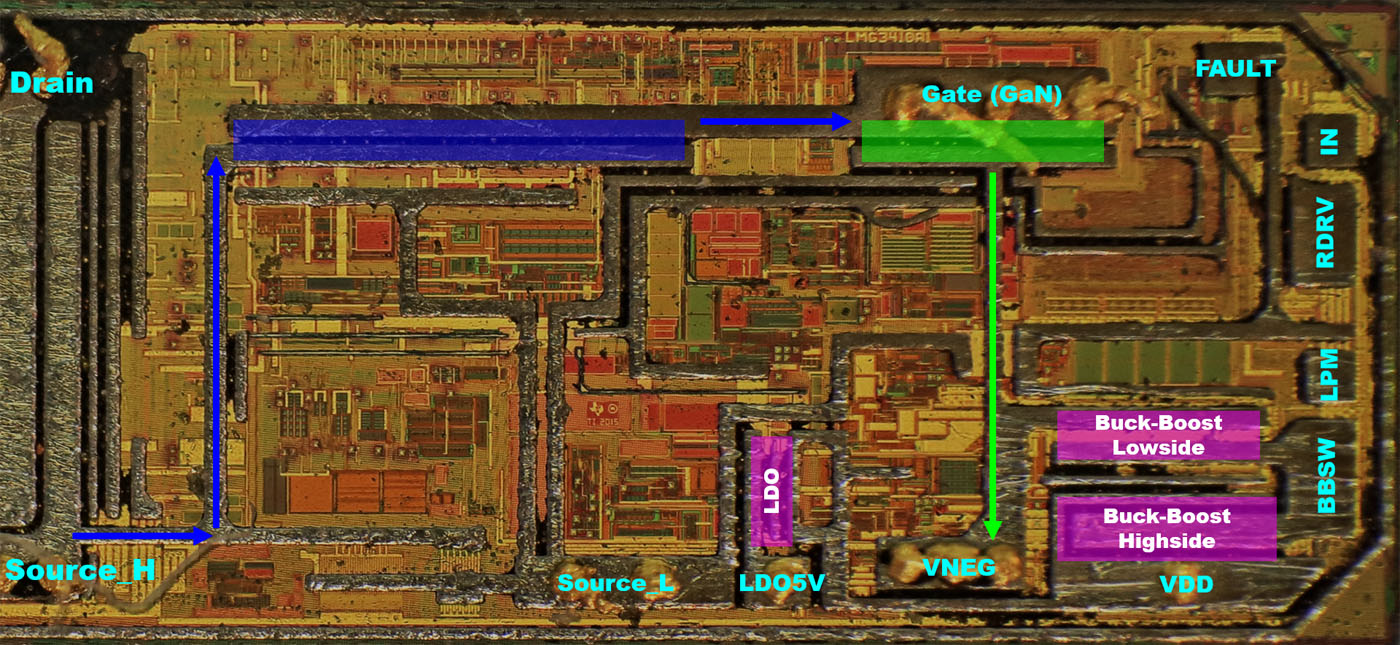
The structures of the control system are too small and too complex to be analysed in detail. However, some function blocks can be identified on the basis of the massive lines. The linear regulator of the 5V voltage regulator can be recognised by its contacting, as can the highside and the lowside transistor of the buck-boost converter (pink).
The gate contact of the GaN FET is connected to the source potential of the component via a very large transistor (blue). Another, not quite as large transistor connects the gate to the negative supply potential (green). The source potential is connected to the die via two paths. A whole row of bondwires leads to the Si MOSFET. Three more bondwires connect the control circuit to the source potential of the device. This keeps interference from the power path away from the control circuit.
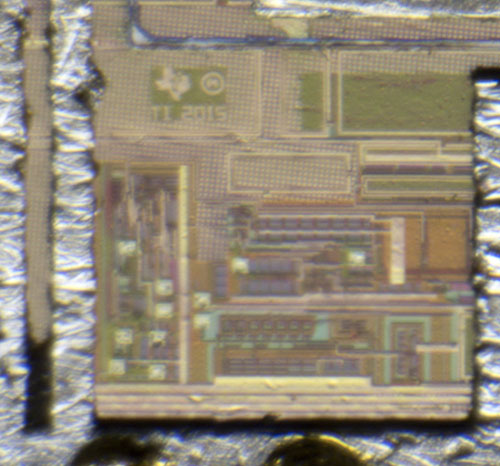
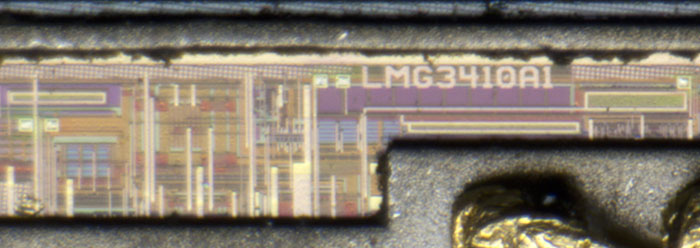
The design obviously dates from 2015 and the designation LMG3410A1 can be found on the die. A1 could stand for a first revision.
The LMG3410 switches off in case of an overcurrent event and remains switched off. The LMG3411 is listed in the same datasheet. However, in the event of an overcurrent this device switches off just for the current cycle. Most likely, the LMG3411 uses the same controller, which is simply configured differently in production.
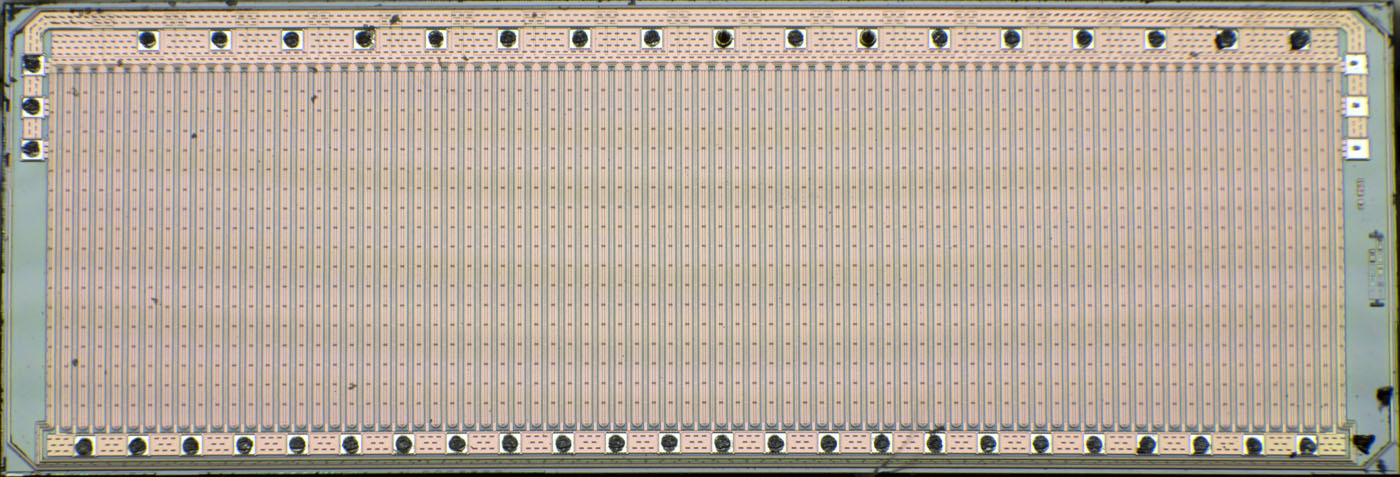
In this picture the GaN transistor is rotated 180° compared to the pictures above. It has a whole row of drain and source bondpads. On the left and right, you can contact the gate potential via three bondpads each, whereby only the left contacts are used in the LMG3410.
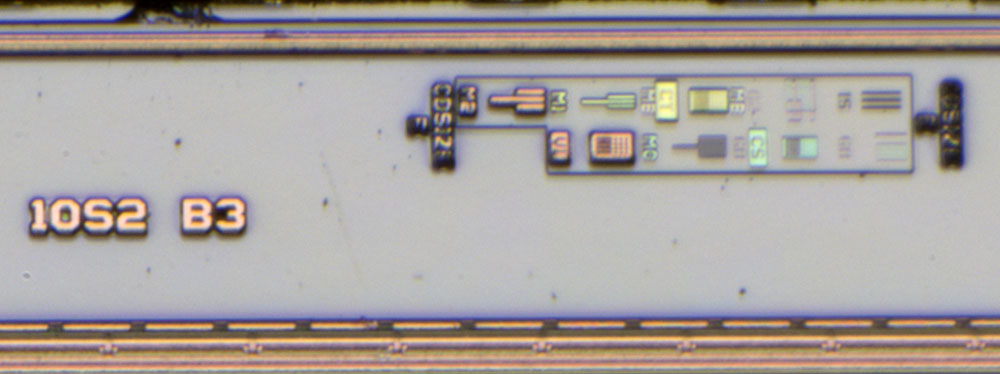
On the right edge, in addition to some designations, the masks are shown too.
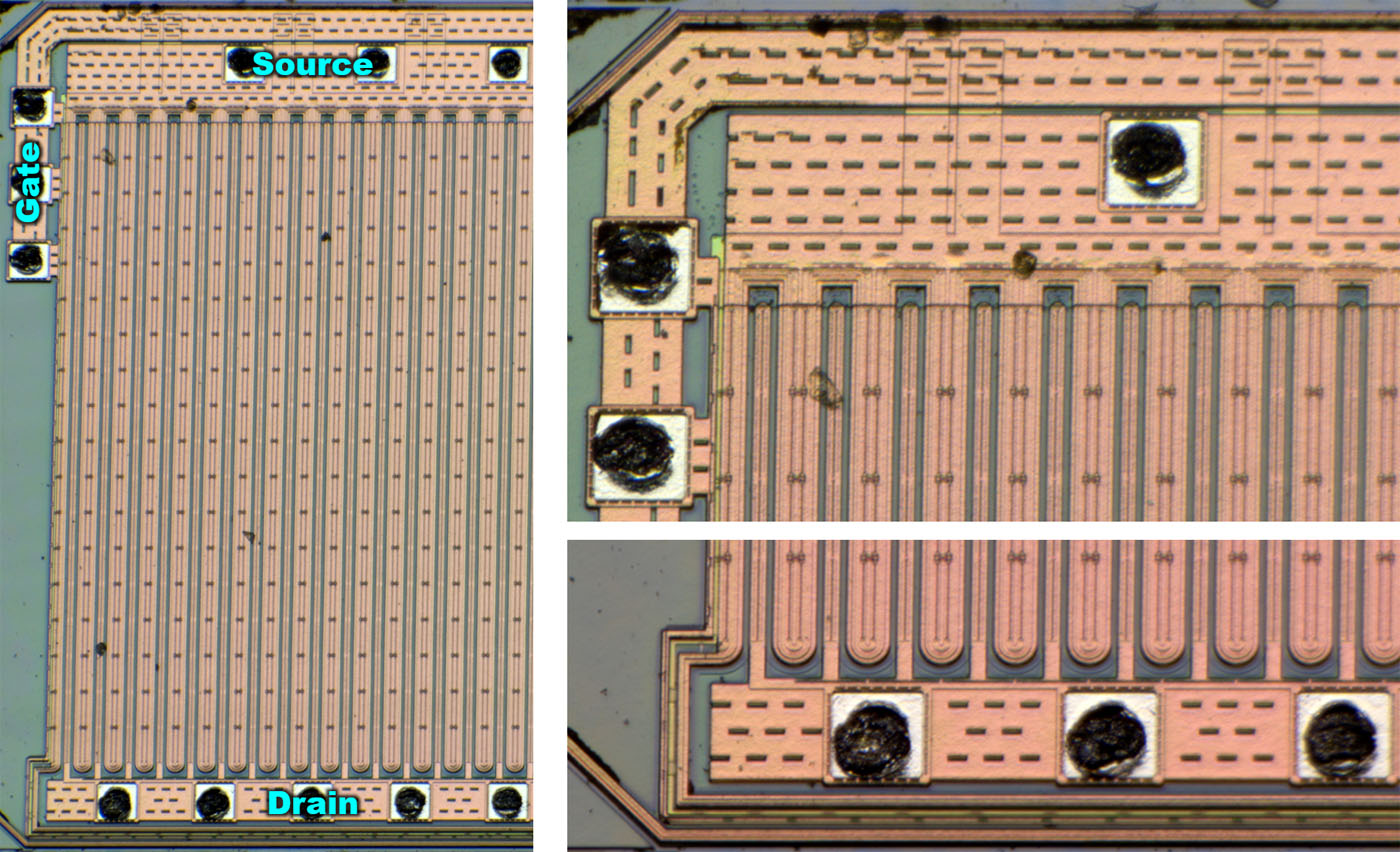
The drain potential is flanked by the source potential over the entire circumference. Regular undercrossings of the wide source lines lead the gate potential into the active area.
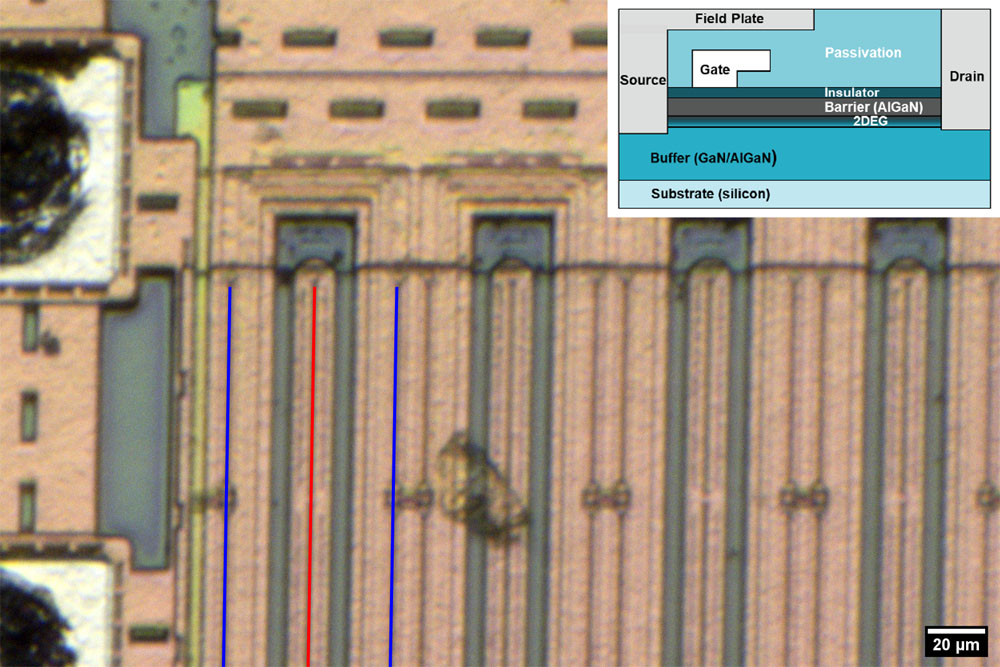
The structures can be easily identified by looking at the structure published by Texas Instruments. Thin vertical lines form the contacts of the source (blue) and drain (red) to the active area. The source metal line is wider. Underneath is the gate electrode.
https://www.richis-lab.de/FET33.htm 